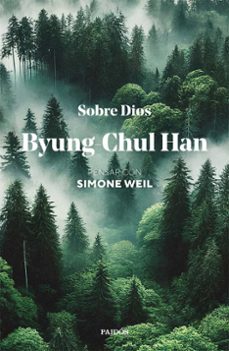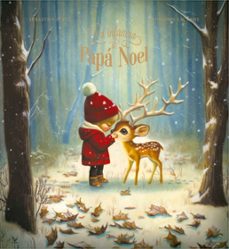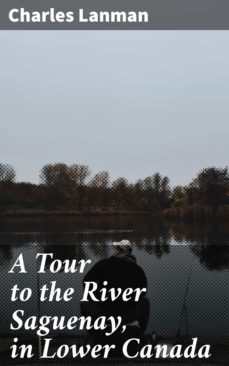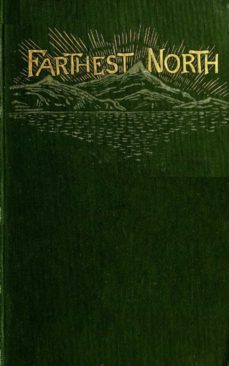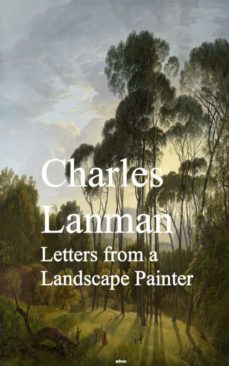Imprescindibles
Ficción
No Ficción
Ciencias y tecnología Biología Ciencias Ciencias naturales Divulgación científica Informática Ingeniería Matemáticas Medicina Salud y dietas Filología Biblioteconomía Estudios filológicos Estudios lingüísticos Estudios literarios Historia y crítica de la Literatura
Humanidades Autoayuda y espiritualidad Ciencias humanas Derecho Economía y Empresa Psicología y Pedagogía Filosofía Sociología Historia Arqueología Biografías Historia de España Historia Universal Historia por países
Infantil
Juvenil
#Jóvenes lectores Narrativa juvenil Clásicos adaptados Libros Wattpad Libros Booktok Libros de influencers Libros de Youtubers Libros Spicy Juveniles Libros LGTBIQ+ Temas sociales Libros ciencia ficción Libros de acción y aventura Cómic y manga juvenil Cómic juvenil Manga Shonen Manga Shojo Autores destacados Jennifer L. Armentrout Eloy Moreno Nerea Llanes Hannah Nicole Maehrer
Libros de fantasía Cozy Fantasy Dark academia Hadas y Fae Romantasy Royal Fantasy Urban Fantasy Vampiros y hombres lobo Otros Misterio y terror Cozy mistery Policiaca Spooky Terror Thriller y suspense Otros
Libros románticos y de amor Dark Romance Clean Romance Cowboy Romance Mafia y amor Romance dramatico Romcom libros Sport Romance Otros Clichés Enemies to Lovers Friends to Lovers Hermanastros Slow Burn Fake Dating Triángulo amoroso
Cómic y manga
Novela gráfica Novela gráfica americana Novela gráfica europea Novela gráfica de otros países Personajes, series y sagas Series y sagas Star Wars Superhéroes Cómics DC Cómics Marvel Cómics otros superhéroes Cómics Valiant
eBooks
Literatura Contemporánea Narrativa fantástica Novela de ciencia ficción Novela de terror Novela histórica Novela negra Novela romántica y erótica Juvenil Más de 13 años Más de 15 años Infantil eBooks infantiles
Humanidades Autoayuda y espiritualidad Ciencias humanas Economía y Empresa Psicología y Pedagogía Filosofía Historia Historia de España Historia Universal Arte Cine Música Historia del arte
Ciencia y tecnología Ciencias naturales Divulgación científica Medicina Salud y dietas Filología Estudios lingüísticos Estudios literarios Historia y crítica de la Literatura Estilo de vida Cocina Guías de viaje Ocio y deportes
CHARLES LANMAN
Recibe novedades de CHARLES LANMAN directamente en tu email
Filtros
Del 1 al 6 de 6
Good Press 4064066170059
In "A Tour to the River Saguenay, in Lower Canada," Charles Lanman presents a vivid and richly detailed account of his travels through the enchanting landscapes of Quebec. The book features a blend of personal narrative, descriptive prose, and historical commentary, reflecting the Romantic literary style prevalent in the 19th century. Lanman meticulously captures the sublime beauty of the Saguenay River region, interweaving his own experiences with observations on the local culture, the natural environment, and the historical significance of the area. His eloquent descriptions and vivid imagery immerse the reader in the vibrant scenery and the unique atmosphere of Lower Canada, serving both as a travelogue and a work of artful literature. Lanman, not only a traveler but also a noted author and journalist of his time, was driven by an insatiable curiosity and passion for exploration. His background as an accomplished writer and his engagement with nature inspired him to set forth on journeys that blended personal adventure with the desire to share the beauty of untouched landscapes with a wider audience. Through his travels, he sought to connect readers with the emotional and sensory experiences of the places he visited. I highly recommend "A Tour to the River Saguenay" to those who appreciate immersive travel literature, as well as to scholars interested in the interplay of nature and culture in 19th-century writing. Lanmans insights and lyrical prose provide a timeless exploration of both the physical and emotional landscapes of Canada, making this work a significant contribution to American travel literature.
Ver más
eBook
DigiCat 8596547041603
In "A Tour to the River Saguenay, in Lower Canada," Charles Lanman presents an evocative narrative that melds travel writing with vivid descriptions of the natural and cultural landscapes of the Saguenay region. Through a blend of descriptive prose and personal reflection, he captures the majestic beauty of Canadas landscapes and the intricacies of the local lifestyle, crafted with a romantic literary style typical of 19th-century travel literature. Lanmans work not only showcases the splendor of the Saguenay River and its surroundings but also engages with contemporary themes of exploration and environmental appreciation, contributing to the broader discourse on natures influence in literature during this period. Charles Lanman, a prominent American author and explorer, was influenced by his background in landscape painting and his experiences in North America. His keen sense of observation and appreciation for nature resonated with the transcendentalist movement prevalent at the time, invigorating his writing. Lanmans travels across Canada and the United States, coupled with his literary talents, equipped him with unique insights into the landscapes and cultures he encountered, which are brilliantly encapsulated in this work. I wholeheartedly recommend "A Tour to the River Saguenay, in Lower Canada" to readers who appreciate travel narratives infused with rich descriptions and contemplative insights. Lanmans journey is not only a visual feast; it serves as a profound commentary on the interplay between humanity and nature, making it essential reading for adventurers, scholars, and nature enthusiasts alike.
Ver más
eBook
anboco 9783736419155
The title and table of contents of this volume contain all that I have to say in regard to its character. My only apology for again appearing before the public is to be found in the treatment which I have heretofore experienced from the critics. With one exception, the more prominent periodicals of England and the United States have spoken of my former productions in the most kindly manner, and I sincerely thank them for their friendship. With regard to the exception alluded tothe "North American Review"I have only to say that its assault upon me was cruel, prompted by an unworthy motive, and wholly undeserved. I write from impulse and for the pleasure which the employment affords. That my books are popular is indeed a matter of rejoicing; but I make no pretensions whatsoever in the literary line, and only desire the approbation of those who are willing to believe me a lover of truth, of nature, and my friends.The word Haw-ho-noo was originally applied to America by the Iroquois Indians, and signifies the country upheld on the back of a turtle; and my reasons for employing it on the present occasion are simply thesea portion of the volume is devoted to the traditionary lore of the Aborigines, and the whole has reference to my native land.C. L.
Ver más
eBook
ANBOCO 9783736419100
It is believed that this book, with its true but none the less stirring adventures, will be of much interest to the general public, as well as gratifying to the many warm friends of Lieutenant Lockwood. It will likewise correct any erroneous impressions which may have arisen from the publication of garbled extracts from the official journals kept by the different members of the Greely party and, by order of the War Department, laid open to the public. By this order, Lockwoods journal and those of others became public property, and hence any reference to them in advance of their official publication is allowable.The few pages devoted to the early life can not be expected to especially interest the general public, but will gratify Lieutenant Lockwoods friends. They are here produced to give them permanency, and to show his sterling character.No attempt is here made to give a history of the Expedition, and only so much of Lockwoods journal is produced as shows his connection therewith. The voyage to Lady Franklin Bay is given more in detail, 2 as it presents a lively picture of an interesting people not much known, and as it exhibits the buoyant spirits with which he entered upon the work, before dissensions in camp had checked them, though without marring his faithfulness and energy. The important part he had in the enterprise, his zeal, energy, and loyalty to his chief and to the cause, all are fully set forth, and will be more clearly seen when the more elaborate history of the Expedition shall be published by Lieutenant Greely, as will shortly be done.Although the journal has been freely used, its language and style have not been closely followed, except in those parts quoted which refer to Lockwoods sentiments and feelings. The deep pathos of these could be expressed as well in no other words.
Ver más
eBook
anboco 9783736418653
The Catskill MountainsSouth Peak MountainA thunder stormMidnight on the MountainsSunrisePlauterkill ClovePeter HummelTrout fishingStony CloveThe Kauterskill FallThe Mountain HouseThe Mountain Lake. A Spring DayThe SkyThe MountainsThe StreamsThe WoodsThe Open FieldsDomestic AnimalsPoetryThe Poultry-yard. A corn-planting Bee. Lake HoriconSketches of its sceneryInformation for anglersSabbath-day PointWar memoriesThe Turret CityDeath of a deerRogers SlideDiamond IslandThe snake-charmerSnake storiesNight on the Horicon. The Scaroon CountryScaroon LakePike Fishing by Torch-lightTrout FishingLyndseys TavernParadox Lake. The Adirondac MountainsTrout Fishing in the Boreas RiverA night in the woodsMoose LakeLake DeliaMount TahawasLakes Sanford and HendersonThe McIntyre Iron Works. John Cheney, the Adirondac hunter, and some of his exploits. Stage-coachThe WinooskiThe Green MountainsThe ruined DwellingThe White MountainsThe FlumeA deep PoolThe Old Man of the MountainThe BasinFranconia NotchView of the MountainsMount WashingtonThe Notch Valley. Montreal.
Ver más
eBook
anboco 9783736419360
My Dear Sir,To you, in testimony of my regard for you, as a Statesman, a Scholar, and a Lover of the Fine Arts, do I dedicate this little volume.Had not my maiden effort in the world of letters been received by the public with such marked favor, I should not venture to publish again. The same motives, however, which prompted the first, have also prompted the present collection of my productions, and I desire no other reward than the one already bestowed upon me in the approving smile of honest and sincere hearts.As my title-page implies, I am now a professional Landscape Painter, my inclinations having compelled me to relinquish the "cotton trade and sugar line," and these letters, originally written to a literary friend in New York, are but the offspring of one who claims the only merit of being a lover of iv Nature and his fellow men. I confess myself to be a creature of impulse, and each paper that I now publish, I would have considered as a mere record of my thoughts and feelings during the hour it may have been indited. Having been a sojourner in various portions of the country during the past summer, in search of the picturesque, you must not be surprised to find yourself one moment scrambling through a mountain gorge, and the next on the margin of the boundless sea. With this preliminary, I lay aside my pen, and return to my palette and pencils.Your sincere friend,CHARLES LANMAN.
Ver más
eBook
Del 1 al 6 de 6






